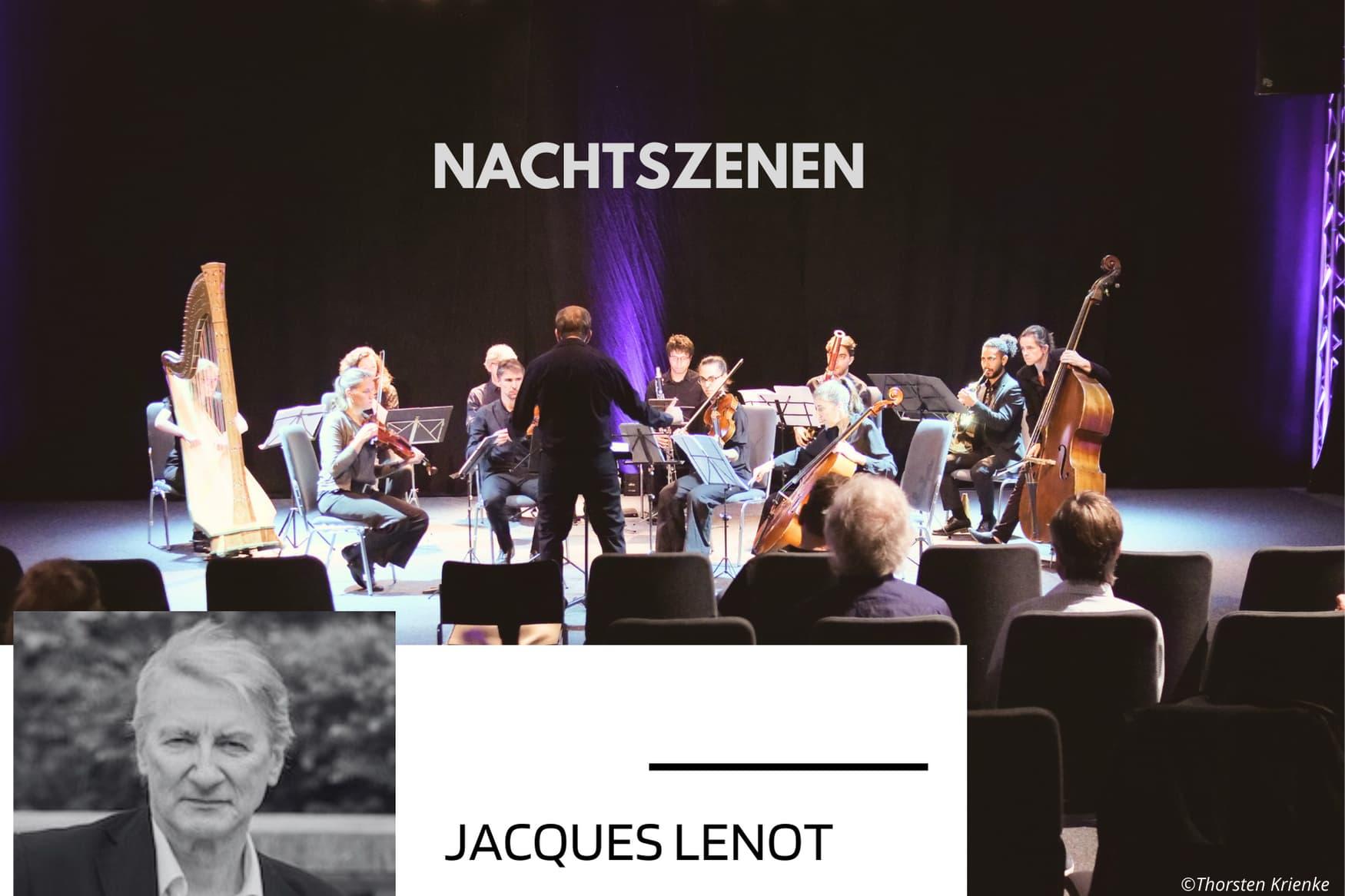After recording its "Propos recueillis" and creating the piece "Bleu Ruysdael," Sturm und Klang continues its fruitful collaboration with Jacques Lenot and presents "Nachtszenen," the composer's new work for 12 musicians, dedicated to the ensemble.

Nachtszenen creation
On Friday 15 march 2024 at 20:00
Centre Culturel Pôle Nord Chaussée d'Anvers 208, 1000 Brussels Belgium